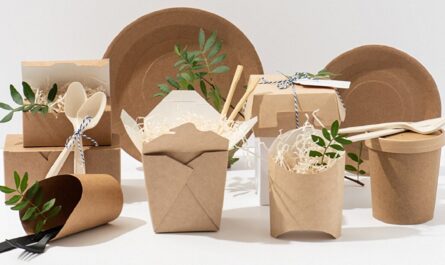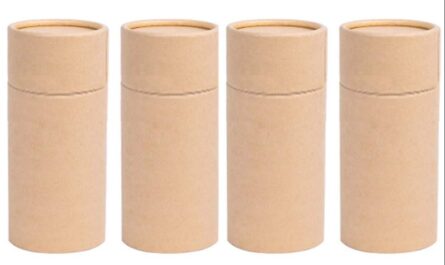With the ever evolving food industry, food packaging plays a pivotal role in not just protecting food but also marketing it effectively. The container that holds the food informs the customer about the quality, brand and details at just a glance. With growing health and environmental concerns, food containers are undergoing a paradigm shift to answer the current needs of consumers.
Sustainable and Eco-friendly Materials
With sustainability becoming a buzzword, food brands are focusing on using recyclable, compostable and eco-friendly materials for their packaging. Plastics are being replaced with materials like paper, glass, aluminum and bio-plastics. Many quick service restaurants have switched to paper straws and cardboard or plant-based containers. Studies show that plant-based containers break down faster without releasing harmful toxins into the environment. Food delivery companies are partnering with container manufacturers to substitute plastic with greener alternatives like bagasse containers. This has the dual benefit of reducing wastage and appealing to the sustainable choices of consumers.
Advanced Technology and Features
Technology is enabling the development of smart and interactive food packaging. Containers embedded with sensors can detect pathogens, monitor freshness and trigger alerts when food gets contaminated or expires. RFID tags and QR codes on packages provide detailed information about ingredients, origin, manufacturing details, nutrition values and even cooking instructions right on the customer’s smartphones. Some packages are equipped with indicators that change color based on time and temperature exposure to give a visual cue of spoilage. Augmented reality helps create interactive and engaging unboxing experiences. Such high-tech containers not only enhance food safety but also the overall consumer experience.
Customization and Personalization
Mass customization is the new mantra with food brands willing to fulfill diverse tastes and preferences. Flexible packaging allows customers to choose various options for fill levels and components. Digital printing makes it possible to customize containers with preferred images, text, colors on demand. Some QSR chains even offer mobile apps that let users personalize meals and containers with favorite elements. Such a tailored approach binds customers to brands and drivesRepeat purchases. It has opened up opportunities for niche custom products catering to all segments ofpopulation including those with special diets.
On-the-Go and Portability
With fast-paced lifestyles, there is a rise in on-the-go consumption. Food Containers are evolving accordingly with focus on portable designs, resealability, spill-proof and leak-proof features. Stackable and foldable containers conveniently fit into bags while retaining integrity. Insulated designs with vacuum walls help keep food warm or cold for longer hours. Some have integrated flasks, easing the process of consuming beverages on the move. Appealing and graphically striking containers in minimalistic silhouettes make snacking frictionless. The packaging mirrors the busyness of modern life with utmost practicality and convenience.
Rise of Subscription Services
Ready-to-eat meal subscription services like Blue Apron are gaining huge popularity by delivering fresh ingredients and recipes weekly. They use stylish custom-designed boxes tailored as per order contents along with consumables like spices and sauces. This has led to many innovations in compartmentalized containers keeping different ingredients separated. Recyclable containers with seals and labels ensure optimal freshness during transit. Some are integrating smart labels with expiration dates, tracking numbers and recipes. Subscriptions solve the dilemmas around healthy home-cooking and present an opportunity for container companies to scale up production of tailored B2C packaging solutions.
Focus on Branding and Storytelling
Amidst the plethora of options, creative food containers help brands stand out on shelves. Storytelling on packages through visuals, history and values narrates the brand philosophy and sourcing processes. Embossed designs, aesthetically pleasing silhouettes and metallic printing increase visibility. Window panels exhibit actual products within adding an element of discovery. Thoughtful touches like food-inspired shapes and fonts further enhance brand appeal through surprise and minimalism. With right messaging and imagery, packaging transforms from mere covering to branding medium creating a lasting impression. Top brands are making the most of containers as marketing communication channels.
Concern for Health and Wellness
Demand for on-trend ingredients like clean labels, organics and probiotics has made its way to food packaging as well. Containers made from natural materials reassure customers about the authenticity of products inside. QR tags provide detailed nutrition info at fingertips. Some contain live active cultures, vitamins and superfoods to offer supplemental nutrition through edible containers. Interactive labels map ingredients to allergens and dietary guidelines. Such nuanced innovations marry health, wellness and convenience to ensure holistic nourishment. They empower buyers to make informed choices aligning with personal health goals through transparent product packaging details.
In summary, food containers are undergoing a transformation catering to current lifestyles as well as global issues of sustainability, health and customization. Advanced materials, portable designs, digital integrations as well as branding innovations point towards an experience-led future of food packaging. As technologies progress further, containers will play an integral role in redefining the retail landscape through highly interactive and customized solutions.
*Note:
1. Source: Coherent Market Insights, Public sources, Desk research
2. We have leveraged AI tools to mine information and compile it



